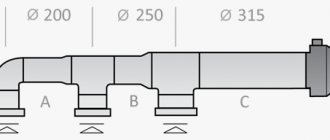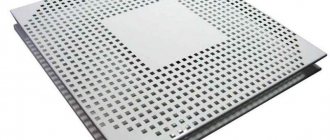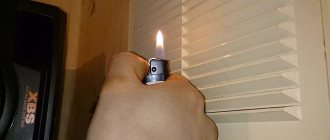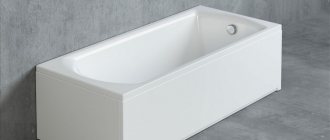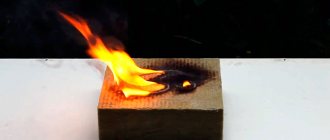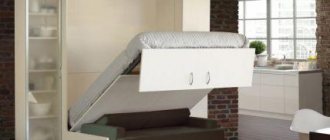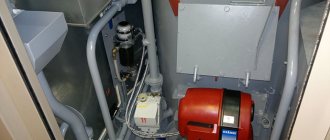General classification
The large number of types of air ducts is due to the variety of their applications in ventilation systems. For ease of classification, air ducts are usually divided according to the following parameters:
- Section shape (rectangular, round, elliptical)
- Size (diameter)
- Structural design (spiral, straight-seam)
- Materials used (galvanized or stainless steel, metal-plastic, plastic)
- Rigidity
- Connection method (flanged, wafer)
- Type of connection (diffusers, tees, bends)
Application of air ducts
Air ducts are special ventilation channels that direct air flows in a given direction and have the ability to regulate air pressure and the intensity of its flow. Various types of air ducts are combined into a often complex system, consisting of many branches, channels, shafts and hoses, which is an essential element in the functioning of ventilation as a whole.
When choosing ventilation equipment, it is necessary to take into account what types of air ducts were used when designing the system on a particular section of the ventilation line. In addition, it is necessary to make sure of the methods of connecting ventilation equipment to the air duct network, paying attention to the diameters and capacity of the air ducts in a certain area, and also take into account what material the walls, ceilings and all parts of the building adjacent to the attachment point are made of.
Section shape
The most common types of air duct cross-sections used when designing a ventilation network are round
and
rectangular
.
If the design features of the ventilation system impose strict restrictions on the size and shape of the section, then air ducts of an elliptical
(flat oval) cross-section are used, which are made from round air ducts by processing them on special machines.
Round air ducts require less material for production and are manufactured using simpler technology than rectangular ones. If metal is used, the production of a rectangular air duct will require, on average, 20-30% more material than for a round one with similar indicators. More complex production is due to the fact that rectangular air ducts are put together from several smaller parts.
The advantage of round air ducts is good tightness, high air flow speed, low noise level, ease of installation, and lighter weight compared to a rectangular counterpart.
The main and important advantage of models with a rectangular cross-section is the possibility of their optimal location in space. They take up less space and adapt to certain features of the layout of the premises, for example, in the case of low suspended ceilings.
As practice shows, the round type of air ducts is most widely used in industry and other production premises, while rectangular ones are more actively used in ordinary buildings, country houses, apartments and other small premises.
Installation nuances
The route for laying the air duct should, if possible, have the shortest length and the minimum number of connections. Before assembly begins, the ventilation system is divided into separate blocks no more than 15 meters long.
Each such node is assembled separately, using the following algorithm:
- The fastening points are marked on the structural elements, and holes are drilled if necessary.
- The individual elements are assembled into larger units, and the joints are carefully sealed.
- Fasteners are installed.
- The finished unit is lifted into place and secured.
- The connection is made with the previously installed node.
For semi-rigid and flexible air ducts, certain features are taken into account during installation. Thus, passage through walls is carried out only with the use of auxiliary elements - special sleeves. The bending radius should not exceed two diameters, and the direction of air movement should coincide with the markings on the air duct. Fastening is carried out at a distance of at least 1 meter, and the permissible sagging is no more than 5 cm for each meter of length.
Installation of metal air duct:
Installation of plastic air duct:
Mounting methods
The connection of adjacent air duct elements is made in two ways: flange and wafer (bandage).
In the first option, there are flanges at the edges of the air duct elements, which are connected to each other with self-tapping screws, rivets or clips (the distance between adjacent fastening elements is at least 20 cm). If necessary, the seam can be welded. Tightness is ensured in another way - through sealing gaskets.
A wafer connection involves the use of a metal band. This method is more economical and easier to implement.
Connection using C-rail:
Insulation of air ducts
Insulation of the air duct is not considered a prerequisite for its installation. The main role of the heat-insulating layer is to combat condensation, which negatively affects the performance characteristics of any material. First of all, thermal insulation will be required on the external sections of the air duct, or on sections of the route passing through unheated rooms.
Another advantage of insulated air ducts is sound insulation. The noise level in such areas will be several times lower, which allows them to be used in children's rooms, bedrooms and other rooms where silence must be maintained. A similar effect is achieved by using elements with thick walls.
Structural design
Also, air ducts, in turn, are divided into straight-seam (seam)
,
spiral-wound (spiral-lock)
and
spiral-welded
.
Straight-seam (industrial) air ducts are made of steel sheet metal with a thickness of 0.55-1.2 mm and a length of 1.25 m (on average). For rectangular models, the seam is placed on the fold to give the structure additional rigidity.
Spiral-welded air ducts are made of special steel strips with anti-corrosion coating, thickness 0.8 - 2.2 mm, width 400-750 mm (on average) and without restrictions on length. By welding the joints overlapping, the seam is dense and durable.
Spiral-lock air ducts are made of special steel strips with an anti-corrosion coating, 0.5 - 1 mm thick, 130 mm wide (on average) and without restrictions on length. By welding the joints overlapping, the seam is dense and durable. In the manufacture of spirally wound pipes, two methods are used: in a ring and in a tape. The first production option is considered more expensive and of higher quality.
Ventilation system installation
When installing ventilation systems, the following are taken into account: room area, number of people, thickness of walls and partitions, excess heat (warm floors, computer, radiators), presence of double-glazed windows, sunny side.
It is best to install the ventilation system during the construction phase. Entrance openings are made under the ceilings, the channel is laid 0.5 m to the roof ridge. The optimal channel width is 2.5 bricks.
The cross-sections of air ducts in room ventilation are calculated in accordance with current SNiPs. Average cross-sectional dimensions of residential air ducts for apartments and houses per 1 sq.m. – 5.4 sq.m. sections, utility rooms - 18 sq.m.
Ventilation controllers are installed for forced ventilation in attics or basements. Also, ventilation system controllers can be connected to dispatching and the “smart home” system.
Grilles can be installed outdoors or indoors. Diffusers with multidirectional cell blades, nozzles and fans are installed in bathrooms, kitchens, and smoke removal systems.
Ventilation is provided using grilles on plasterboard or cassette ceilings and walls; on the floor in the form of strips.
Ventilation installation video:
Materials used
The materials used to make different types of ductwork depend on the specific application and the features of the existing ventilation system.
Galvanized air ducts
are used to transport air in temperate climates without an aggressive environment (temperatures up to +80 °C). The zinc coating helps protect the steel from corrosion, which significantly extends the service life, but increases the cost of such products. Due to their resistance to humidity, mold will not appear on the walls, which makes them attractive for use in places with high humidity in the ventilation system (residential premises, bathrooms, public catering places).
Stainless steel ducts
used to transport air masses at temperatures up to +500°C. The production uses heat-resistant and fine-fiber steel, up to 1.2 mm thick, which allows this type of air duct to be used in aggressive environments. The main places of application are heavy industrial plants (metallurgy, mining, with increased background radiation).
Metal-plastic type of air ducts
made using two layers of metal, such as corrugated aluminum, with foam plastic sandwiched between them. This design has high strength characteristics with low weight, has an aesthetic appearance and does not require additional thermal insulation. The downside is the high cost of these products.
Also, the plastic type of air ducts has become especially popular in conditions of transferring aggressive air environments .
The main industries in this case include chemical, pharmaceutical and food. Modified polyvinyl chloride (PVC) is used as the main material, which has good resistance to moisture, evaporation of acids and alkalis. Plastic is a light and smooth material that ensures a minimum of pressure losses in the air flow and tightness in connections, due to which a large number of different connecting elements are made from plastic, such as elbows, tees, bends.
Other types of ducts such as polyethylene ducts,
find their application in supply ventilation systems.
Air ducts made of fiberglass
are used to connect the fan to the air distributors.
Air ducts made of vinyl plastic
are used in aggressive environments where the air contains acid vapors that promote corrosion of steel. These types of air ducts have high corrosion resistance, are lightweight and can be bent in any plane at any angle.
Advantages and disadvantages
When installing ventilation, metal, plastic and flexible corrugated pipes are usually used, often combining them in different areas to achieve maximum performance.
| Type of pipes | Advantages | Flaws |
| Metal |
|
|
| Plastic |
|
|
| Flexible |
|
|
We recommend that you read: How to choose drainage pipes with perforation when installing drainage systems
In order to mitigate the existing disadvantages of different types of air ducts and create a reliable and efficient ventilation system, a combination technique is sometimes used during design.
Thus, the main lines are mounted from metal pipes, from which neat plastic or textile elements radiate throughout the rooms, and in the kitchen and in the bathroom, when forced ventilation is installed, corrugated products are installed for convenience.
Rigidity
At the moment, the most widespread type of air ducts on the market is rigid.
Therefore, a significant part of all ventilation equipment is oriented towards rigid ventilation ducts.
As a rule, rigid air ducts are made with a round or rectangular cross-section. The material used is sheet metal (galvanized or stainless steel, aluminum or plastic). Thermal insulating materials (basalt wool) can be used as a laminating coating. Metal pipes are produced on roll forming machines, and plastic analogues are pressed through special extruders.
This type of air duct is used in structures that require high strength ventilation ducts. The advantages of these products include ease of installation and maintenance, as well as good aerodynamic performance. When creating, however, an extensive ventilation network, it is necessary to take into account the total weight of the future air duct system and, if necessary, take care to strengthen the entire structure.
Flexible duct type
appears in the form of a corrugated sleeve, which is why they are sometimes called corrugated or spiral. The base is made of steel wire reinforcement, and the walls are made of metallized polyester (laminated foil). The peculiarity of this product is its exceptional ease of installation, transportation and maintenance. If necessary, new elements can be wound onto an existing structure and bent in any direction. The disadvantages include the corrugated surface of the walls, which negatively affects the speed of air passage through the channel, as well as sound insulation.
Semi-rigid type of air ducts
- an intermediate link that has the strength of rigid and elasticity of flexible models. This type is made of aluminum or steel strips rolled into a tube and having a spiral seam. The main disadvantage, as in the case of flexible models, is the low speed of air passage through the ventilation ducts, which makes it difficult to use these products in an extensive ventilation network.

